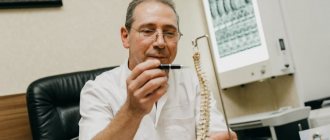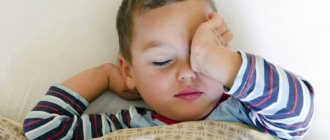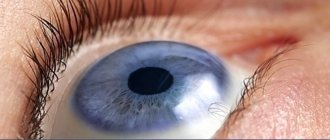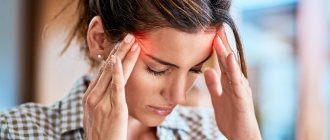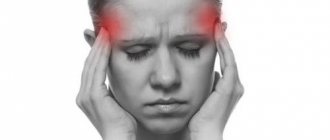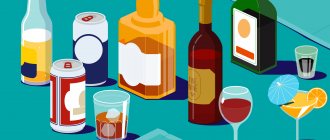There are 6 types of headaches:
- Muscle tension
- Vascular
- Neuralgic
- Liquorodynamic
- Functional or psychalgia
- Mixed
Here is an interesting plate based on statistical data from outpatient visits to a pediatric neurologist at our clinic.
Please note that complaints of headaches appear in children in preschool age, with a subsequent increase.
| Age/ Nosology | 0-1 year | 1-3 years | 4-7 years | 8-10 years | 11-14 years old | 15-17 years old |
| Headaches, unspecified | 7% | 9% | 16% | 18% | ||
| Tension type headaches | 3% | 12% | 18% | 24% | ||
| Vascular headache | 0.3% | 0.8% | 2% | 10% | 18% | |
| Migraine | 1% | 1% | 1% | 1% | ||
| Functional, including against the background of cerebrovascular disease | 2% | 4% | 6% | 9% |
Tension type headaches
(psycho-emotional or muscle pain) occur when the child’s psycho-emotional load does not match his capabilities (emotional-volitional or cognitive), which in turn increases the tone of the “emotional” muscles that are attached to the periosteum of the skull. This muscle pain is considered a headache. Now it becomes clear why this type of headache is characteristic of the age at which preparation for school begins, and increases exponentially by the time of passing the Unified State Exam.
Vascular headache
This is pain in response to stretching or inflammation of the vascular wall. There can be many reasons, from vascular abnormalities to banal vascular dystonia. Migraine is also a type of vascular headache, has characteristic clinical manifestations, and its cause is aseptic inflammation of the vascular wall.
Neuralgic headache
occurs when there is pressure on the nerve trunk, its branch or node, and after compression there is ischemia and pain. The reason for this may be post-traumatic or inflammatory swelling along the nerve, as well as any space-occupying formation. Neuralgic headache can also be of central origin, as a result of dysfunction of the nociceptive and antinociceptive systems of the brain.
In the occurrence of liquorodynamic headache
the main role is played by increased intracranial pressure. Intracranial pressure may increase with the appearance of additional formations, both liquid and solid, in the cranial cavity, which in turn compresses and/or displaces the meninges, blood vessels and nerves, causing pain. This may be a tumor, inflammation of the meninges of the brain (meningitis). Intracranial hypertension can also occur as a result of the appearance of any neoplasm that obstructs the outflow of cerebrospinal fluid from the cranial cavity.
Functional headache
most often has a psychogenic mechanism.
Mixed form, has mixed origin.
We have analyzed six types of headaches, which, in turn, have different causes.
To figure out what exactly is causing your child’s headaches, you need to contact a pediatric neurologist, who, after a neurological examination, will decide whether you need consultation with a related specialist and may prescribe additional examination methods.
In the children's building of the clinic
You will be able to get advice from experienced specialists, as well as conduct all the necessary examinations to identify the causes of headaches in your child.
Information prepared for you by:
Razina Elena Evgenievna – pediatric neurologist, epileptologist, functional diagnostics doctor, leading specialist of the clinic. Conducts a reception in the Children's building on Usachev.
Causes of headaches in children
A healthy child is happiness and pride for parents. The whole family looks with emotion at the growing miracle. There are many joyful events: the first smile, the first tooth, the first step... The first rise in temperature, the first bruise, the first scratch... Victories and sorrows, laughter and tears often go side by side.
Headache (cephalgia) is one of the most common complaints when visiting a doctor, not only in adults, but also in pediatrics. If they do not occur so often in preschoolers, then by the age of 12-15, more than half of children and adolescents periodically experience headaches. In some cases, parents recall that long before starting kindergarten, the child periodically became restless and put his hands on his head.
When a child or teenager begins to complain of cephalalgia, the reaction from parents varies. Some believe that this is done to attract attention, since headaches are a purely “adult” ailment, and this simply does not happen in children. Others, on the contrary, begin to examine and treat the child for any, even minor complaint.
The pain can be acute or chronic. Acute pain occurs suddenly or recently and is severe. As a rule, acute pain is a signal from the body about danger: injury, infection, inflammation. Acute pain is a necessary adaptive signal that not only informs about tissue damage, but also causes reflex and behavioral reactions that help reduce the damaging effects to a minimum. As soon as the effect of the factor that caused it ceases, the pain stops. Often this condition requires emergency measures. As a rule, with proper treatment prescribed by a doctor, all symptoms of the disease disappear, and along with them the headache stops hurting. The first person to turn to for help is the local pediatrician. Chronic pain is pain that lasts longer than the healing period, usually lasting more than 3 months. In this case, there is no clear connection with any reason, or it is of an unclear, indefinite nature. Any factors can provoke new episodes (emotions, workload, stress, weather changes, etc.). How should we react to the fact that the baby complained of a pain in the head, while being completely healthy? How should we perceive this – as an alarming symptom or just a child’s fantasy?
The next gradation of headaches is their division into primary and secondary. Primary ones are independent diseases. In childhood, these are mainly migraines and tension headaches. In secondary cases, cephalgia is only one of the symptoms of another disease. There are more than 150 known diseases that are accompanied by headache complaints. The most common of them are:
- head and/or neck injuries;
- infectious diseases;
- inflammation of the paranasal sinuses (sinusitis);
- diseases of the gastrointestinal tract (gastritis, duodenitis);
- anemia;
- stress;
- parasitic diseases;
- allergic reactions;
- taking various substances, including medications, and their withdrawal;
- visual impairment (myopia, farsightedness) with insufficient correction, glaucoma;
- poor posture, etc.
Headaches can occur as a reaction to changes in the environment or in the body (reactive), poor lifestyle: when a child has too little or too much sleep, spends too much time in front of the computer or TV screen, is not physically active, or eats incorrectly. After the initial examination of the patient with complaints of headaches, the pediatrician will refer him for the necessary consultations and examinations, depending on the identified disorders. In most cases, children with complaints of headaches are observed and registered with a neurologist.
The diagnosis of primary headache (migraine, tension headache) is made by a specialist based on the characteristic clinical picture and patient complaints. So, with migraines, episodes of severe, usually one-sided pain (forehead, temple, half of the head) are disturbing. It is pulsating in nature, the pain is severe, accompanied by nausea, and more often by repeated vomiting. Irritating light and sounds. The child tries to lie down and fall asleep, the rule of three Ts applies: quiet, dark, pill. After sleep, as a rule, pain does not bother you, motor activity is restored, and appetite may be somewhat reduced for some time. Very often one of the family members has similar cephalgia. Factors that trigger migraine episodes include:
- Stress
- Lack of sleep or excess sleep
- Exercise stress
- Food (cocoa, chocolate, cheese, milk, nuts, eggs, tomatoes, citrus fruits, fatty foods)
- Long breaks between meals
- Bright lights, noise, unpleasant odors
- Vestibular stimuli (travel in a car, train, sea travel, airplane flights, swings)
- Meteorological factors (changes in barometric pressure), etc.
In the presence of rare episodes of headaches, the neurologist recommends means for emergency pain relief, the possible provoking causes are clarified, and the prevention of repeated episodes is carried out by normalizing the daily routine and nutrition, and carrying out general strengthening measures. If headaches are frequent and significantly affect the child’s health, then courses of medications are prescribed for preventive treatment. Their selection is carried out depending on the patient’s age, frequency, severity and type of migraine paroxysms, and the results of the response to previous treatment. In childhood, so-called “periodic syndromes of childhood—precursors of migraine”—also occur. These include: cyclic vomiting, abdominal migraine, benign paroxysmal vertigo of childhood. Thus, with cyclic vomiting, repeated attacks of vomiting occur at least four times per hour; with abdominal migraine, the child has repeated attacks of pain in the midline of the abdomen lasting from 1 to 72 hours. These conditions are not accompanied by complaints of headaches, but if identified by a specialist, they indicate a possible migraine.
Patients with tension headaches (TTH) complain of bilateral cephalgia of a compressive or squeezing nature, without clear localization. Often the pain is localized mainly in the fronto-parietal, fronto-temporal, occipito-cervical region, like a “hoop” or “tight cap”. The pain is moderate or mild, there is no significant nausea or vomiting. The child can eat, read, watch TV, and there is no deterioration in the condition during everyday physical activity. Mild nausea and poor tolerance to bright lights or loud sounds may occur. Tension pain occurs from once a month to almost constant, it occurs mainly after 2-3 lessons at school, or mainly in the afternoon, there are no night pains.
Migraine and tension-type headaches are not life-threatening conditions, but they lead to a deterioration in the child’s quality of life: decreased memory, attention, academic performance; they are difficult for children to tolerate and affect their mood, behavior, studies, and professional orientation. Therefore, it is important to recognize these diseases in time, as well as to carry out timely prevention of headaches:
- You should plan your child’s day so that there is time for rest and sufficient sleep;
- proper organization of study and rest regime;
- balanced diet;
- a proportionate combination of physical activity and hardening procedures, exercise and morning exercises;
- it is enough to stay in the fresh air;
- parents should not smoke indoors;
- create a favorable psychological environment in the family, communicate more often with the child;
- teach the child to correctly solve problems that arise, to switch attention in time;
- create conditions to prevent prolonged muscle tension in an uncomfortable position during study and work, organize sufficient lighting, and correct visual impairments with the correct selection of glasses or lenses.
In this article, we discussed the possible causes of headaches in children. More details about the methods of treating cephalalgia - when continued.
Authors: Filipovich E.K., ass. department Children's Neurology BelMAPO, chief freelance pediatric neurologist of the KZ of the Minsk City Executive Committee; Leshchinskaya E.V., head. pediatric department of the healthcare institution "7GDP" in Minsk
The problem of headaches that occur in childhood
For a long time, it was generally accepted that infantile cephalalgia was a rare phenomenon. However, this opinion is erroneous. Young children cannot always explain that they have a headache, and older children often hide the fact of a headache from their parents because they are afraid of discovering some “terrible” disease in themselves.
Most often, headaches in children of different ages occur due to:
- mental overstrain;
- psycho-emotional overload;
- VSD;
- injuries;
- migraine;
- inflammatory processes.
At the same time, a child’s contact with a mobile phone or computer is also of great importance, since modern children are almost constantly stuck in gadgets. This provokes mental fatigue, because the load on vision, hearing and the psyche in general is enormous.
Also, headaches in children can be caused by a long stay in a room where it is always stuffy, or by irregular meals. By the way: children who regularly attend kindergartens very rarely suffer from headaches. The fact is that in any kindergarten they follow a daily routine, sleep and nutrition, in contrast to home conditions, where these factors are often disrupted.
Of course, one should not exclude the presence of serious diseases in children, ranging from damage to the nervous system and ending with some forms of sore throat or flu.

